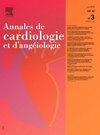Management of Acenocoumarol in Tunisian elderly population : Risk factors of overdose and bleeding
IF 0.3
Q4 Medicine
引用次数: 0
Abstract
Introduction
Anticoagulant therapy, often required in the elderly, is not without risk. This study aims to investigate the particularities of the use of anticoagulants in the elderly during hospital stay, along with the factors associated with bleeding and overdose.
Results
There were 55 women and 45 men (sex ratio: 0.81), with a mean age of 75.7 ± 6.9 years. The indications for anticoagulant treatment were venous thromboembolism (VTE) (92%) and atrial fibrillation (AF) (8%).
The average duration of treatment with acenocoumarol was 17.22 days ± 7.9. The dose of acenocoumarol initiation was 1 mg in 85% of patients and 2 mg in 15%.
INR < 2 was observed in 15% of patients. INR in the target area was obtained in 47% of patients with a mean dose of 2.33 mg of acenocoumarol. An overdose of acenocoumarol was noted in 38% of patients: average INR at 4.7. Seven patients had bleeding events. An overdose was reported in 4 of them.
Fever, infection, inflammatory syndrome, hypoalbuminemia, hypoprotidemia, and malnutrition were associated with a greater risk of overdose in our patients. Gastroduodenal ulcer disease, past medical history of gastrointestinal bleeding and renal failure were risk factors for bleeding in our patients.
Conclusion
The use of anticoagulants in the elderly requires a comprehensive assessment, including comorbidities, geriatric settings, and social environment.
突尼斯老年人口中的醋硝香豆素管理 :用药过量和出血的风险因素
抗凝治疗常用于老年人,但并非没有风险。本研究旨在探讨老年人住院期间抗凝血剂使用的特殊性,以及与出血和用药过量相关的因素。结果女性55例,男性45例(性别比0.81),平均年龄75.7±6.9岁。抗凝治疗的适应症为静脉血栓栓塞(VTE)(92%)和心房颤动(AF)(8%)。阿塞诺古美尔治疗的平均持续时间为17.22天±7.9天。阿塞诺古豆素起始剂量为85%的患者1mg, 15%的患者2mg。INR & lt;在15%的患者中观察到2。47%的患者平均剂量为2.33 mg阿塞诺古玛罗,靶区获得INR。38%的患者发现阿塞诺古豆醇过量:平均INR为4.7。7例患者出现出血事件。其中4人被报告服药过量。发热、感染、炎症综合征、低白蛋白血症、低蛋白质血症和营养不良与我们的患者用药过量风险增加有关。胃十二指肠溃疡、既往消化道出血和肾功能衰竭是本组患者出血的危险因素。结论老年人抗凝血药物的使用需要综合评估,包括合并症、老年背景和社会环境。
本文章由计算机程序翻译,如有差异,请以英文原文为准。
求助全文
约1分钟内获得全文
求助全文
来源期刊
CiteScore
0.60
自引率
0.00%
发文量
68
审稿时长
6-12 weeks
期刊介绍:
Organe scientifique de référence fondé en 1951, les Annales de cardiologie et d''angéiologie abordent tous les domaines qui intéressent quotidiennement les cardiologues et les angéiologues praticiens : neurologie et radiologie vasculaires, hémostase, diabétologie, médecine interne, épidémiologie et prévention.
Les Annales de cardiologie et d''angéiologie sont indexées aux grandes bases de données et publient rapidement, et en conformité avec les normes internationales de publication scientifique, des articles en français sur la pathologie cardiaque.

 求助内容:
求助内容: 应助结果提醒方式:
应助结果提醒方式:


